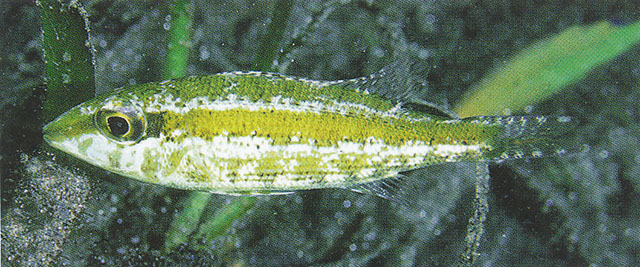| Lethrinidae (Emperors or scavengers), subfamily: Lethrininae |
| 20 cm TL (male/unsexed); max. reported age: 15 years |
|
reef-associated; marine; depth range 1 - 150 m, non-migratory |
| Indo-West Pacific: Red Sea and East Africa to the Ryukyu Islands and New Caledonia. Recently reported from Tonga (Ref. 53797). Also reported from French Polynesian islands (Ref. 4795) but this is a misidentification of Lethrinus rubrioperculatus (Ref. 2295). |
|
Dorsal spines (total): 10-10; Dorsal soft rays (total): 9-9; Anal spines: 3-3; Anal soft rays: 8-8. Body is brown and gray (usually green, Ref. 48635), becoming lighter ventrally, with scattered irregular dark spots. Often there are two dark bands below the eye, one at the lower rim or the opercle and one at the corner of the mouth. The fins are generally light or translucent; the caudal fin is light and dark striped. |
| Inhabits sandy and weedy areas near coral reefs, solitarily or in groups (Ref. 30573, 90102), where it is well camouflaged and usually swims in the cover of the substrate (Ref. 48635). Juveniles sometimes abundant in shallow, weedy areas (Ref. 4369). Solitary or in small groups (Ref. 90102). Feeds on small benthic invertebrates (Ref. 30573). A protogynous hermaphrodite (Ref. 55367). Flesh of large individuals is esteemed (Ref. 4369). |
|
Least Concern (LC); Date assessed: 09 March 2015 Ref. (130435)
|
| harmless |
Source and more info: www.fishbase.org. For personal, classroom, and other internal use only. Not for publication.
